Magnolia trees: a guide to the most popular varieties
Our favorite types of magnolia trees and shrubs are guaranteed to add exotic looking flowers and stunning color to your space
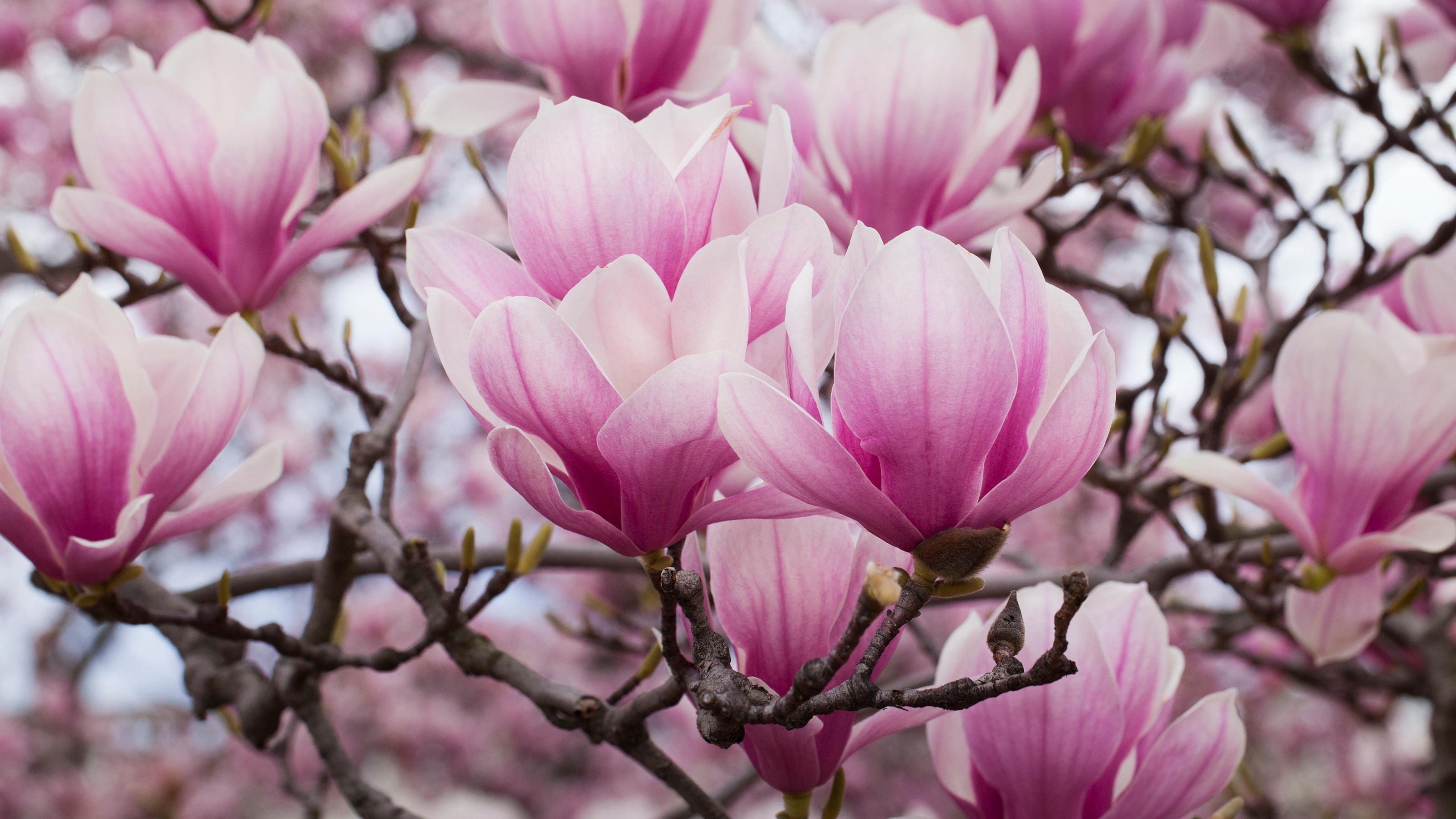

Magnolia trees are some of the most exotic looking trees and shrubs we can grow. Varieties are suitable for most climates, for most garden situations, even containers, and their large, glamorous flowers can bring us a rich and powerful fragrance.
They range from bold and stylish evergreen trees with glossy foliage, to neat and bushy magnolia shrubs with leaves that drop in fall. The alluring flowers are made up of six or more fleshy petals and usually stand upright at the tips of the shoots and side branches. The foliage of many is large and dramatic and some have attractive fall leaf color. The colors of magnolia flowers also vary greatly, from rich and sultry to soft and subtle.
In the garden magnolias can make impressive specimen trees and focal points, while evergreens make very effective screens to hide eyesores. Planting an evergreen magnolia to hide an eyesore in your neighbor’s yard works especially well.
On a smaller scale, magnolia trees make superb lawn features and the neater, bushier varieties can make fine specimens in small spaces. Some of the shrubby deciduous magnolias can be so covered in flowers that they hide the branches.
Magnolias can also be very effective in containers which can be moved into a prominent position at flowering time and then rotated out of the front line. They can even be grown as standards.
Enjoy color, fragrance and elegance with these 10 magnolia trees
As one of the best flowering trees, magnolias come in a variety of styles. There are evergreen magnolias, usually best in the south, and deciduous magnolias which lose their leaves for the winter and are happier in colder climates.
Some magnolias are impressively tree-like in growth and, among these, some are broadly spreading and need plenty of space while other varieties are more narrow and fit well into tighter spaces and small backyards.
There are also some magnolias that remain smaller and bushier, that take up less space, and will fit well into any situation. The mature size of a magnolias depends partly on the variety but also depends very much on the climate in which it is growing.
Find the right magnolia tree for your plot with our pick of the best varieties.
1. 'Daybreak' Magnolia

- Hardiness: USDA 5-8 (UK H6)
- Height: 15-40ft (4.5-12m)
- Spread: 3.5-8ft (2.5-5m)
- Best for: the best all-round deciduous magnolia
Narrow and upright in growth, and so ideal for tight spaces and small gardens, ‘Daybreak’ fits well into suburban gardens and is considered a street tree for the future. It usually develops a good shape with no pruning or trimming.
The 9-10in (23-25cm) flowers open in mid-spring and come in rosy pink tones, each of the eight petals is darker pink on the outside and paler on the inside. The flowers are exceptionally fragrant – in fact ‘Daybreak’ is one of the best scented of all magnolia trees.
‘Daybreak’ has won awards on both sides of the Atlantic. It should be grown in full sun in well-drained soil.
2. Southern Magnolia (Magnolia Grandiflora)
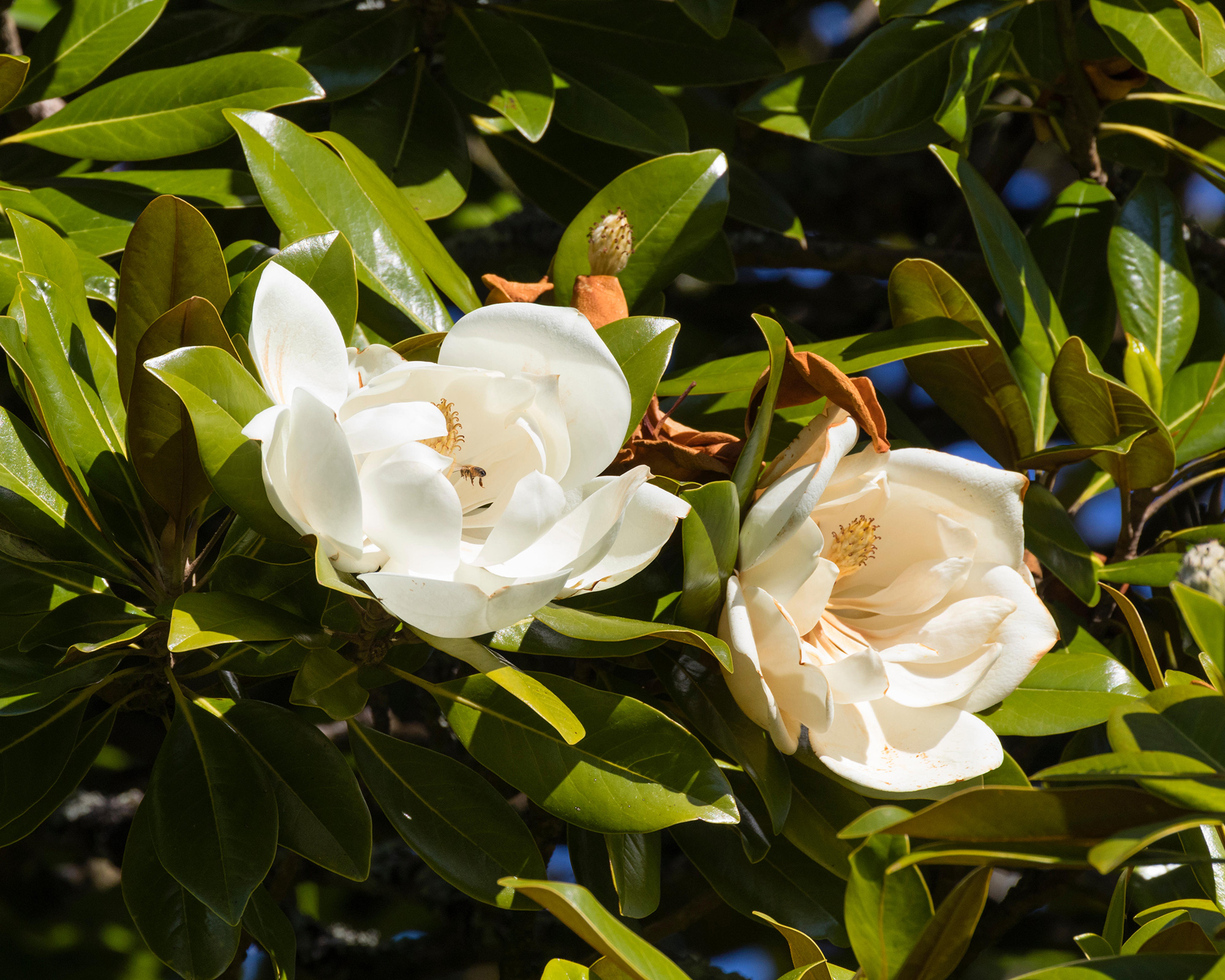
- Hardiness: USDA 6-10 (UK H5)
- Height: 16-80ft (5-24m)
- Spread: 6-50ft (2-15m)
- Best for: southern US states
This is the classic magnolia of the southern US, though it can also be grown as far north as New York City. It works well as a specimen, a privacy tree, a screen, or as a windbreak, as this bold and dramatic evergreen features large, glossy, dark green leaves and with a rusty-colored felt underneath.
The huge, lemon-scented, creamy white flowers are up to 15in (35cm) wide and open in summer and early fall.
Many named varieties are available including the neat and compact ‘Kay Parris’ and ‘Little Gem’, and ‘Victoria’, one of the most cold-tolerant and an award-winner on both sides of the Atlantic.
The Southern magnolia is the state flower of Mississippi and Louisiana and it should be grown in sun or partial shade in rich, well-drained soil.
3. 'Heaven Scent' Magnolia
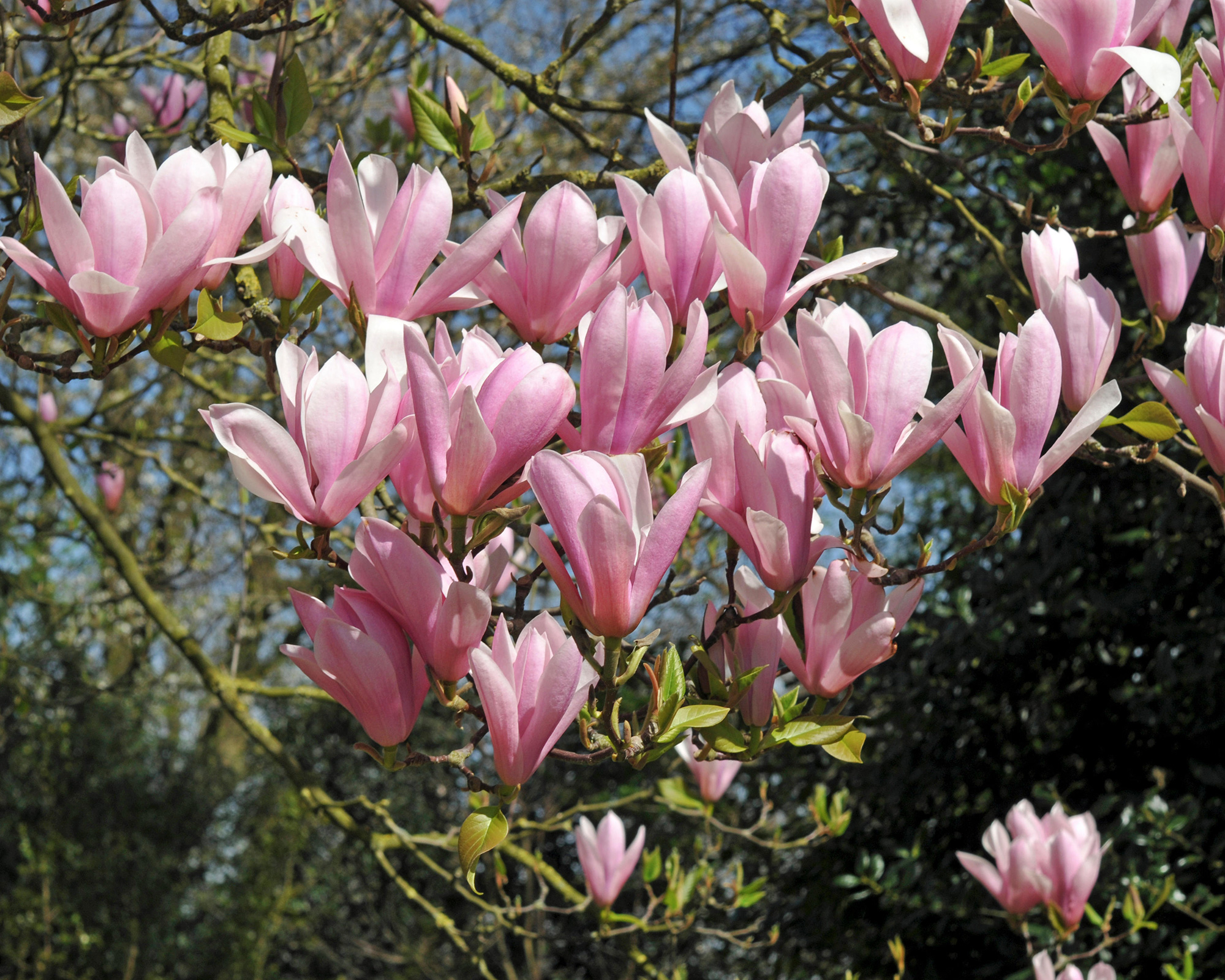
- Hardiness: USDA 5-8 (UK H5)
- Height: 25-40ft (8-12m)
- Spread: 25-40ft (8-12m)
- Best for: lawn specimen
‘Heaven Scent’ makes an elegant small deciduous tree at first and then, as it matures, develops a broadly rounded shape, with the outer branches almost touching the ground.
The fragrant flowers open in mid-spring, tulip-shaped at first and then flaring more widely to about 4in (10cm) across, and are produced in great profusion creating quite a spectacle. The nine rosy pink petals fade to blushed white as they age, especially towards the tips, then in fall, unlike many magnolias, the foliage turns gold and yellow.
Grow in sun or part shade, in any reasonable soil.
4. 'Jane' Magnolia
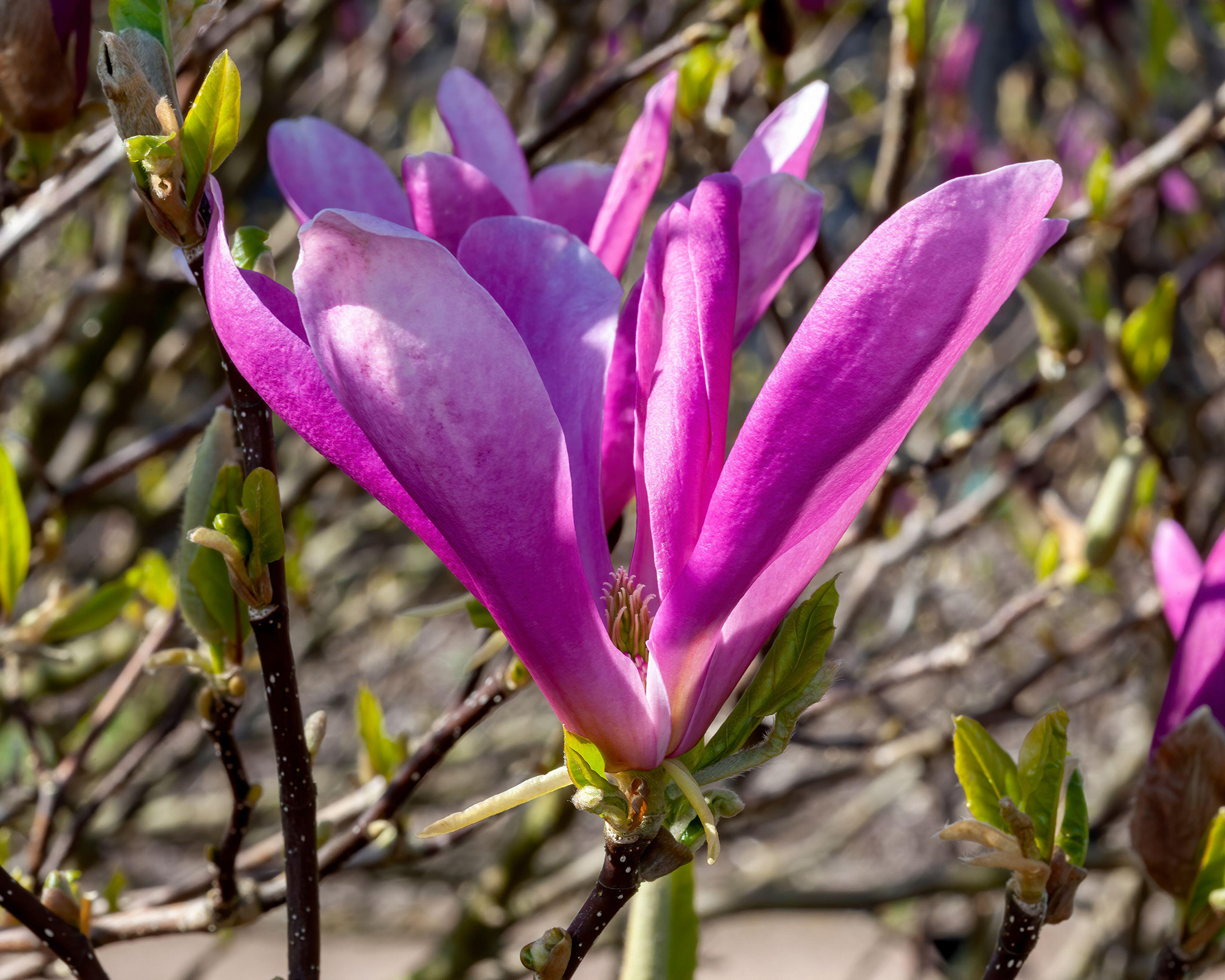
- Hardiness: USDA 4-9 (UK H6)
- Height: 10-15ft (3-5m)
- Spread: 8-12ft (2-4)
- Best for: long flowering season
This widely popular deciduous magnolia makes a large, multi-stemmed shrub or small tree, and is ideal as a specimen lawn tree. Its 4in (10cm) flowers are very fragrant, are especially elegant in shape and reddish-purple on the outside and white on the inside.
Although at their peak in late spring, flowers continue to open through the summer giving ‘Jane’ and unusually long flowering season.
‘Jane’ is one of The Girls Series, eight varieties raised at the National Arboretum in Washington D.C. and named for the secretaries who worked there. With flowers ranging from blushed white to deep purple, all are good.
Ideal in a sunny situation with good soil that drains well.
5. 'Leonard Messel' Magnolia (Magnolia X Loebneri 'Leonard Messel'

- Hardiness: USDA 5-9 (UK H6)
- Height: 15-30ft (4.5-9m)
- Spread: 20-25ft (6-7.5m)
- Best for: frost resistant flowers
This deciduous large shrub or small tree develops an attractively rounded habit as it matures, its tight growth concentrating the floral display. In early spring it opens its 5in (12cm) wide, very colorful flowers, each with about a dozen petals that are dark pink on the outside and palest pink within.
Although flowering early, when more likely to be frosted, the flowers of ‘Leonard Messel’ are unusually frost resistant.
This is one of the most adaptable of all magnolia trees, growing and flowering well in a wide range of soil types from acid to limy, sandy to rich (though not waterlogged) and in sun or dappled shade.
An alternative is the variety ‘Merrill’ which is perhaps the most cold hardy of all magnolias and has white flowers.
6. Anise Magnolia (Magnolia Salicifolia)
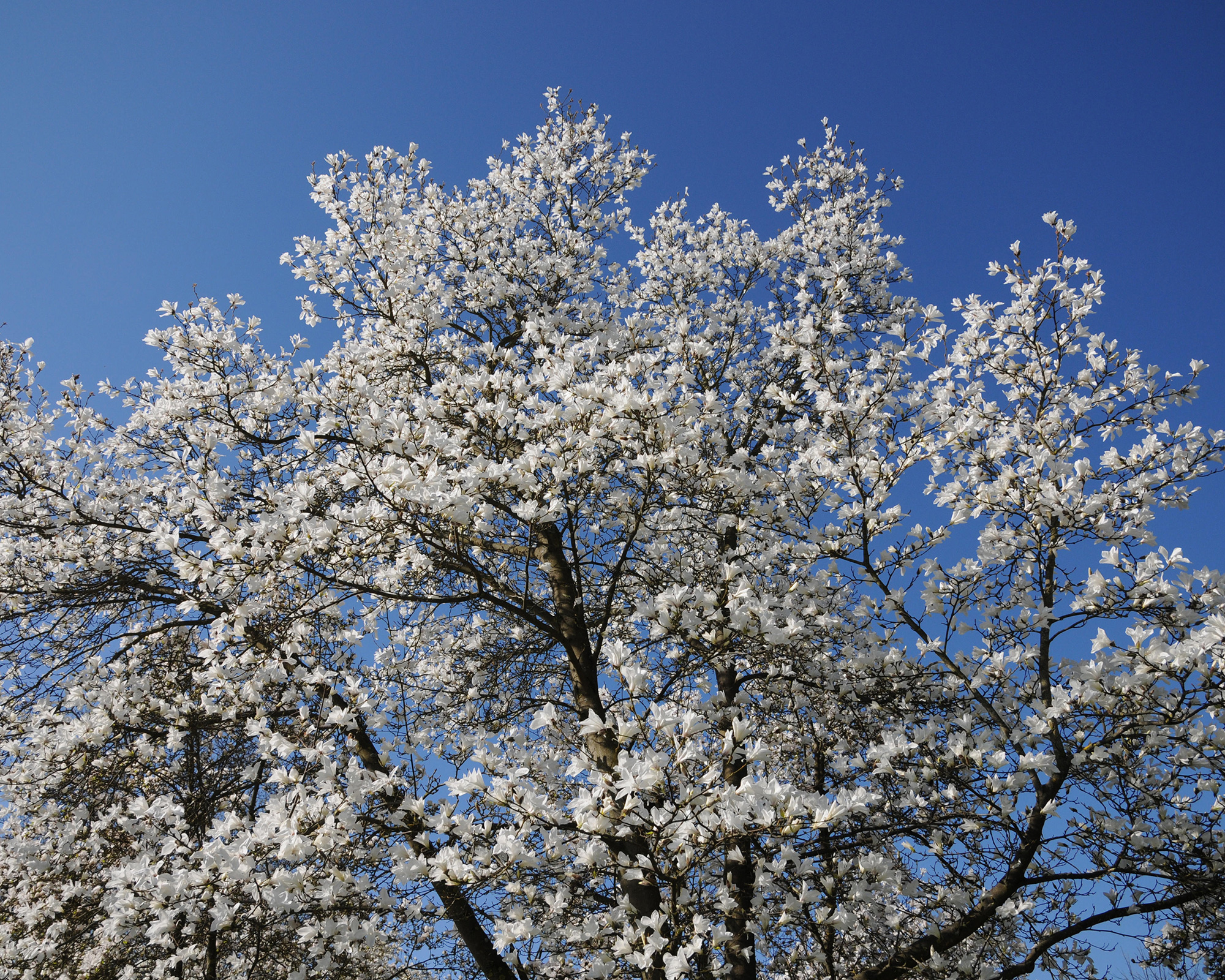
- Hardiness: USDA 4-7 (UK H6)
- Height: 30-50ft (9-15m)
- Spread: 30-50ft (9-15m)
- Best for: early flowering
Usually seen as a rather narrow tree, though broadening out in its later years, the anise magnolia is named for the aroma that comes from its foliage when crushed – anise, with a touch of lemon. One of the earliest magnolias to open, its pure white fragrant flowers are up to 6in (15cm) across and a tree in full bloom is a breathtaking sight.
The anise magnolia also features yellow fall leaf color, rosy pink fruits and unusually attractive grey bark that is especially noticeable in winter.
Plant this stunning backyard tree in well-drained soil in a sunny site, try to plant where it is sheltered from the early morning sun as this protection will help prevent frost damage.
7. Saucer Magnolia (Magnolia X Soulangeana)
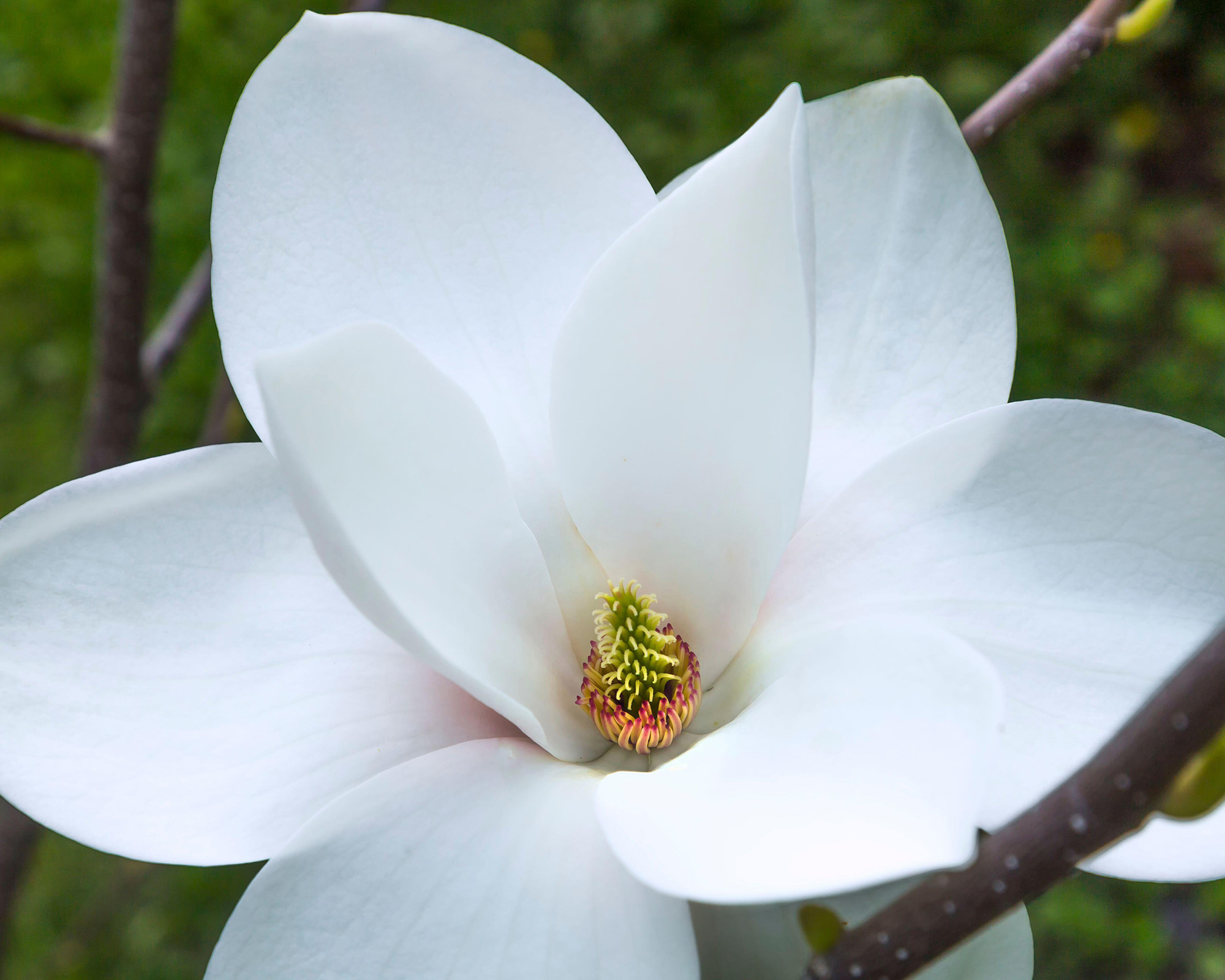
- Hardiness: USDA 4-9 (UK H6)
- Height: 40x45ft (12-14m)
- Spread: 40x45ft (12-14m)
- Best for: a lawn specimen
This magnolia is a classic and is a familiar sight in suburban front yard landscaping of London, New Jersey and around the temperate world. Eventually making a broad, multistemmed deciduous shrub, although known as saucer magnolia the flowers vary from tulip to saucer-shaped and in color from rich reddish purple to white.
For almost 200 years new varieties have been developed but old favorites remain popular. Look for ‘Brozzoni (late flowering white), ‘Lennei’ (rich rose pink), ‘Lennei Alba’ (pure white) and ‘Rustica Rubra’ (reddish purple, white within).
Best in sun and tolerant of almost any conditions except thin, dry and infertile soil, shelter from early morning sun will help the flowers survive frosts.
There are plenty of other options for the best trees for front yards in our dedicated guide too.
8. Star Magnolia (Magnolia Stellata)
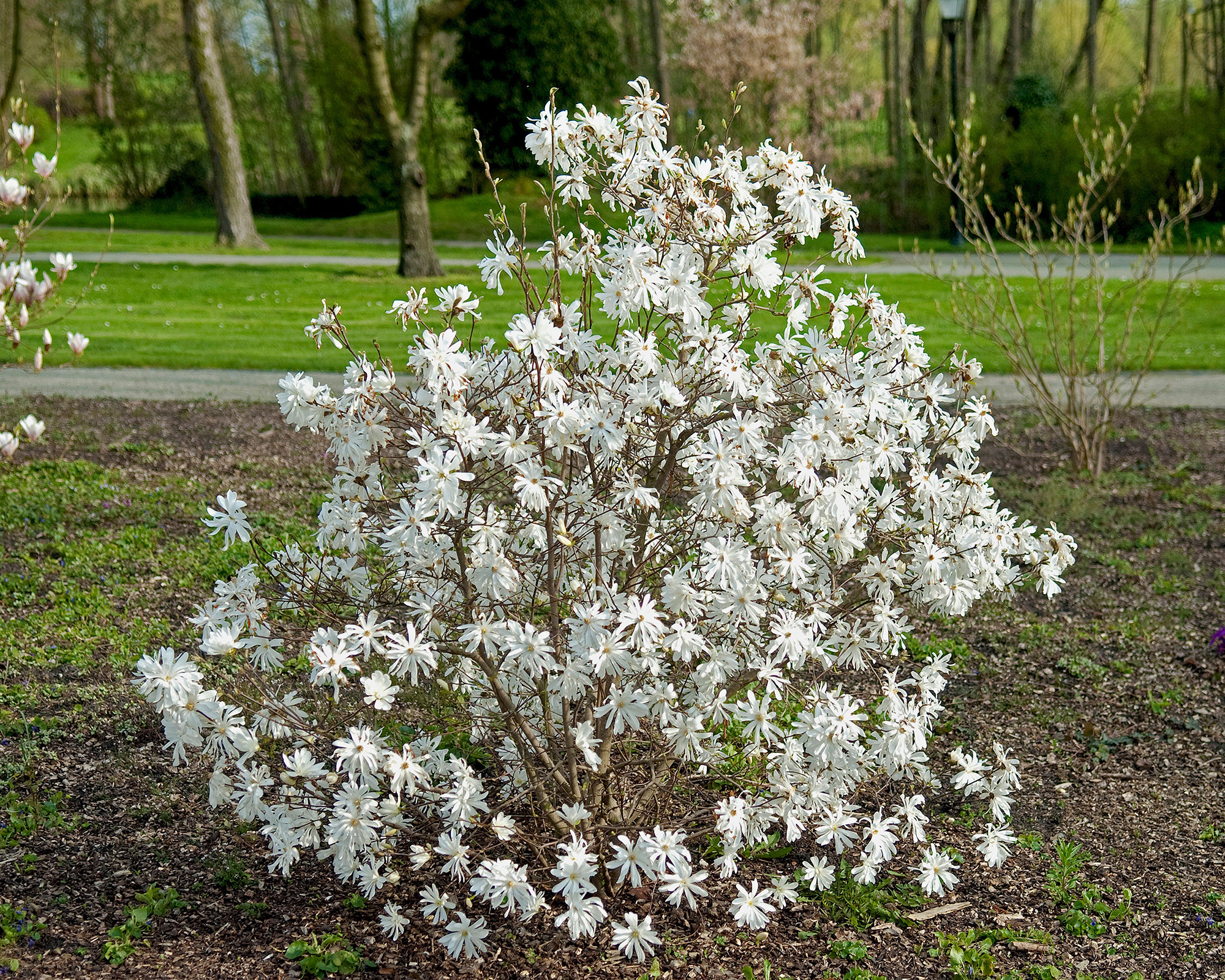
- Hardiness: USDA 4-9 (UK H6)
- Height: 3-10ft (1-3m)
- Spread: 3-10ft (1-3m)
- Best for: small gardens
One of the top trees for small gardens, Star magnolia makes a dense, relatively slow growing, repeatedly branched deciduous shrub whose 4-5in (10-12cm) flowers may be made up of anything from twelve to forty-five narrow petals. Usually white in color, there are also blushed varieties and a few richer pinks. Although one of the earliest to bloom, the flowers are frost resistant. Unusually for magnolias, flowers develop on very young plants.
There are many varieties including ‘Centennial’ (very hardy, white with a faint blush), ‘Jane Platt’ (pale pink) and ‘Royal Star’ (large white flowers opening from pink buds). Be cautious about buying ‘Waterlily’ as four different plants are grown under this name!
Best in full sun, with well-drained soil and a north or west facing position.
9. Sweetbay Magnolia (Magnolia Virginiana)

- Hardiness: USDA 6-10 (UK H5)
- Height: 45-50ft (14-15m)
- Spread: 20-30ft (6-9m)
- Best for: growing in shade or wet soil
A good tree for shade, this native species can be evergreen, partially evergreen or deciduous depending mainly on where it is grown. It makes an upright specimen, broadening a little with age with dark glossy green eaves that are silver on the undersides. The creamy white, lemon-scented flowers are up to 3in (8cm) across and open in late spring and into summer.
The type most often seen is var. australis, which grows in southern US states, while var. virginiana is seen less often, and mostly in the north.
The sweetbay magnolia needs full sun and an acid soil, but grows well in boggy conditions. ‘Satellite’ is more reliably evergreen than most, ‘Ned’s Northern Belle’ is the hardiest.
10. 'Yellow Lantern' Magnolia
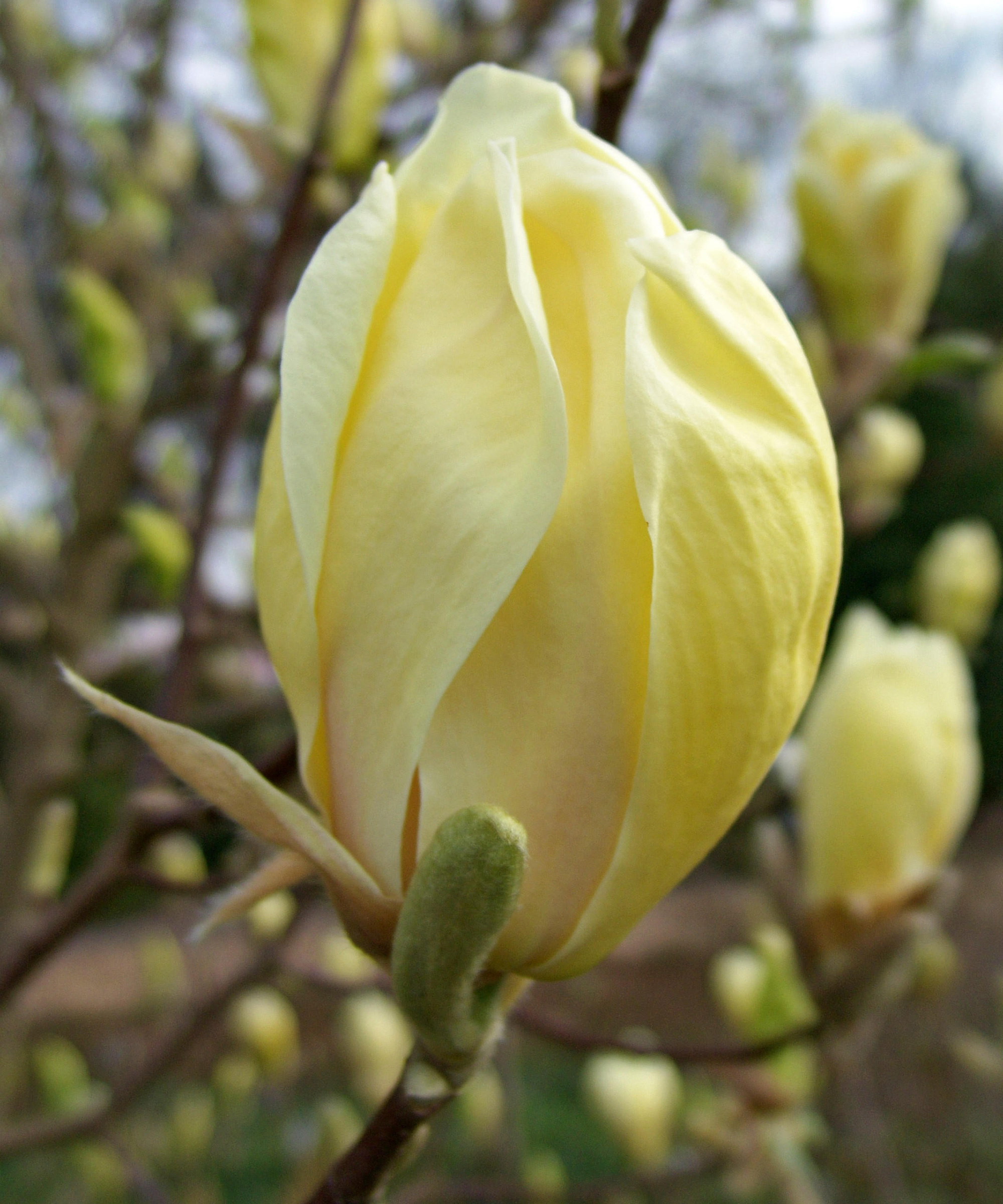
- Hardiness: USDA 5-8 (UK H6)
- Height: 15-20ft (4.5-6m)
- Spread: 10-15ft (3-4.5m)
- Best for: yellow flowers in tight spaces
Colorful yellow flower magnolia trees are a relatively recent innovation and are improving all the time. ‘Yellow Lantern’ makes a narrow, upright, nicely shaped and rather compact deciduous tree with no pruning or training. Its tulip-shaped, lemon yellow, 8in (20cm) flowers open in late spring and feature a soft pink, almost peachy, stain at the base of the petals.
Look out too for the ‘Elizabeth’, which makes a larger tree, and the later flowering, rather starry ‘Gold Star’ which almost always avoids frosts.
Enjoys plenty of sun and a neutral or acid, well-drained soil and an annual mulching to help retain moisture.
What are the best magnolia trees for containers?
The best magnolia trees and shrubs for growing as part of your container gardening ideas are the evergreen southern magnolia (Magnolia grandiflora) and sweetbay magnolia (Magnolia virginiana) which are happy to be pruned if they grow too large. Deciduous star magnolias (Magnolia stellata) also make very effective plants for garden planters and flower prolifically from an early age.
Many magnolias will thrive in containers but it is important to go about it in the right way. Firstly, choose a lightweight container for your magnolia – a decorative plastic pot rather than a terracotta or concrete container. You may wish to move it when flowering is over and so weight is an issue. Choose a container at least 18in (45cm) in diameter.
Use an acid potting soil, one that is suitable for rhododendrons, as magnolias dislike limey conditions. Be sure to keep the roots moist and fertilize with a feed recommended for rhododendrons.
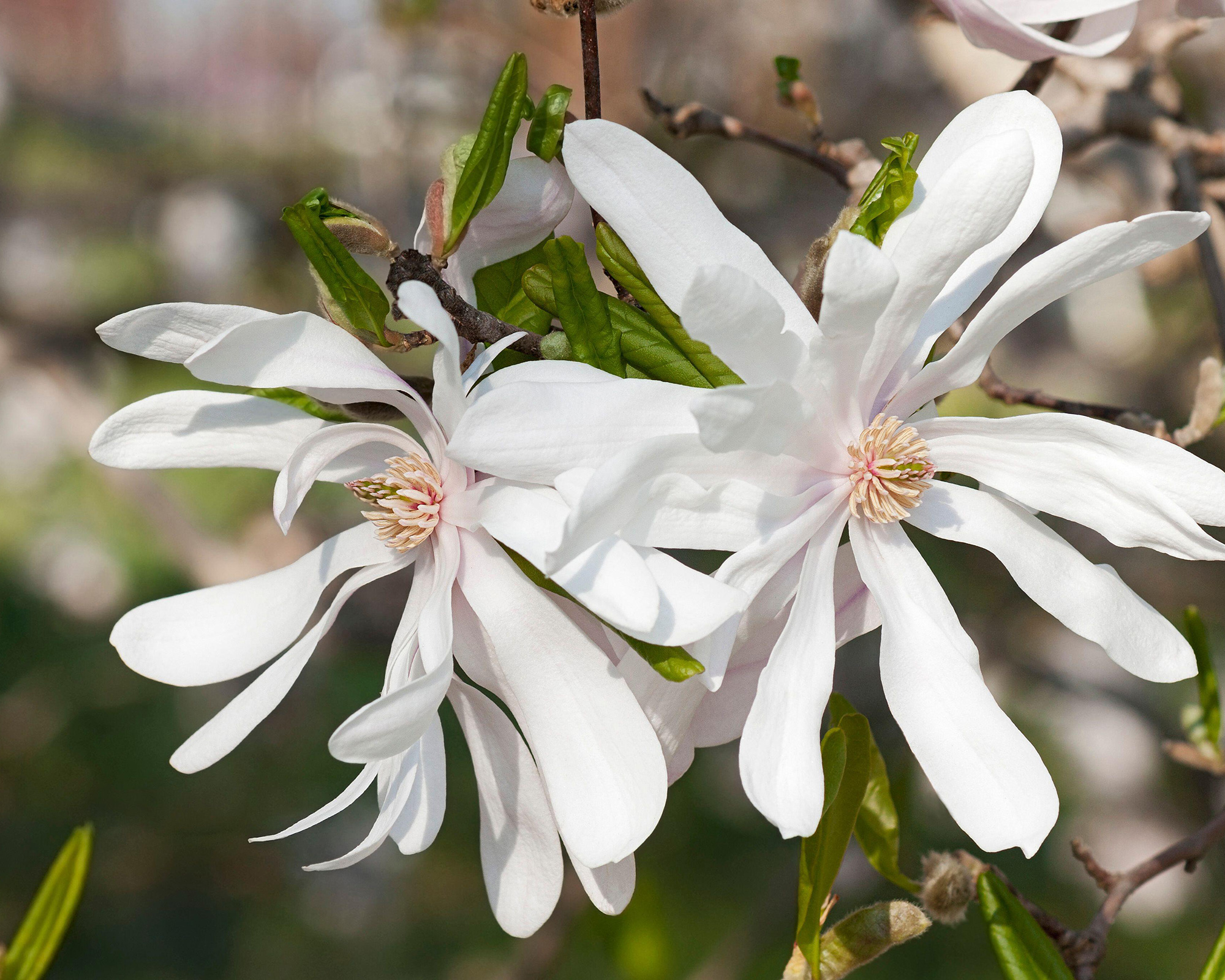
What magnolia trees are best for limey soils?
Most magnolia trees prefer a neutral or acid soil. If azaleas and rhododendrons grow well for you, magnolias will too. If in doubt, pick up a soil test kit from Amazon.
If your soil is limey, many magnolias will not grow well but there are some that are sufficiently tolerant to be worth trying, especially if your soil is amended with pine bark before planting. Keeping your magnolias moist helps them do well in borderline conditions.
Consider these magnolias for limey soil:
- Cucumber tree - Magnolia acuminata (pale yellow flowers)
- Delavay’s magnolia - Magnolia delavayi (dramatic evergreen foliage)
- Kobus magnolia - Magnolia kobus (white flowers, very hardy)
- ‘Leonard Messel’ Magnolia - Magnolia ‘Leonard Messel’ (two-tone pink flowers)
- Star magnolia – Magnolia stellata (pink or white, compact plant)
- Wilson’s magnolia - Magnolia wilsonii (white, ruby center)
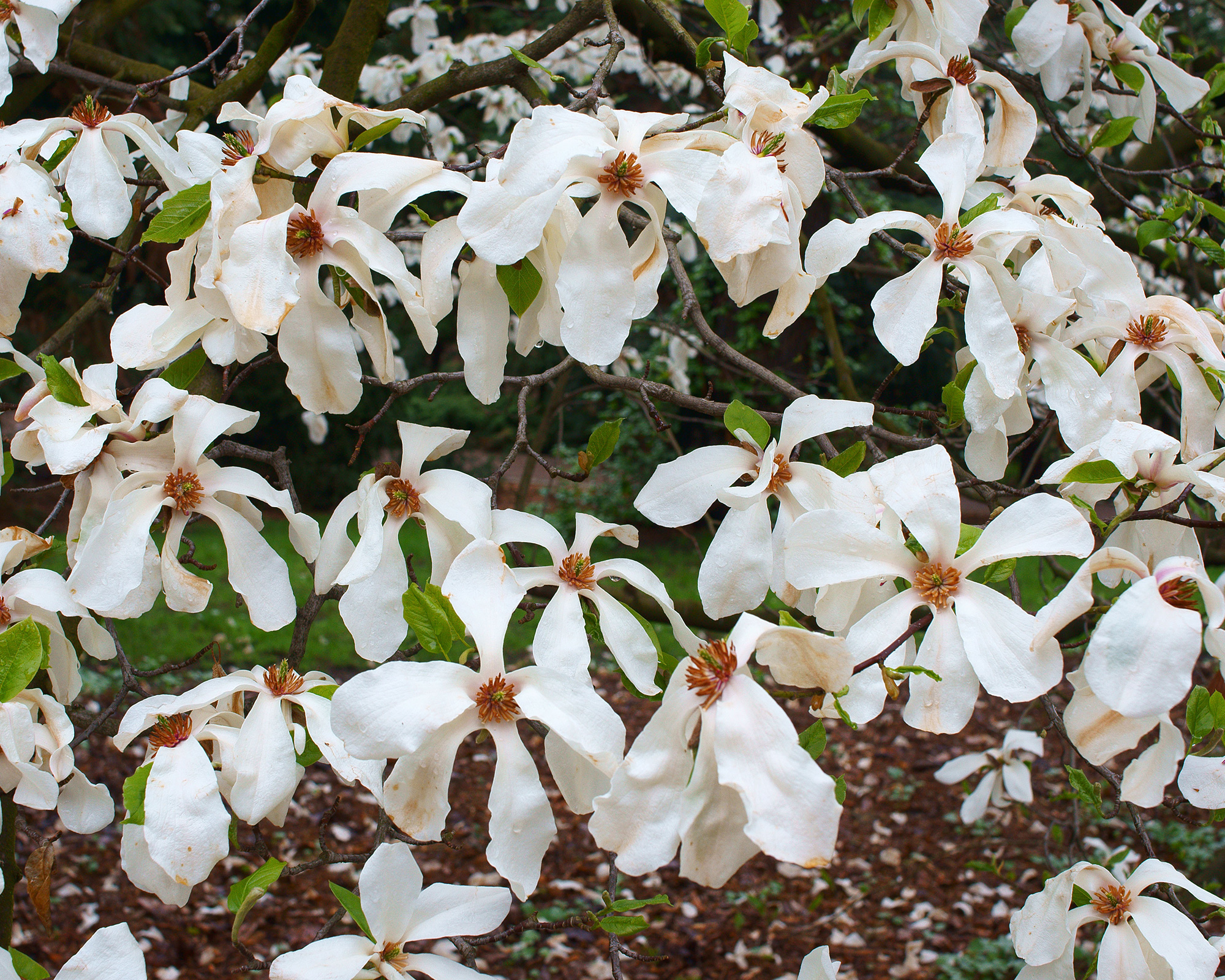
What magnolia trees flower from a young age?
Magnolia varieties vary in the age at which they produce their first flowers but many will not flower until four or five years old, while some may grow for eight or ten years before they burst into bloom.
If prompt flowering is important to you then consider the many varieties of the star magnolia (Magnolia stellata), which will usually start to flower when only one or two years old. Another magnolia that flowers well as a young plant is Magnolia sprengeri ‘Diva’.


Graham Rice is a garden writer who has won awards for his work online, and in books and magazines, on both sides of the Atlantic. He is a member of a number of Royal Horticultural Society committees and the recipient of the 2021 Garden Media Guild Lifetime Achievement Award.
